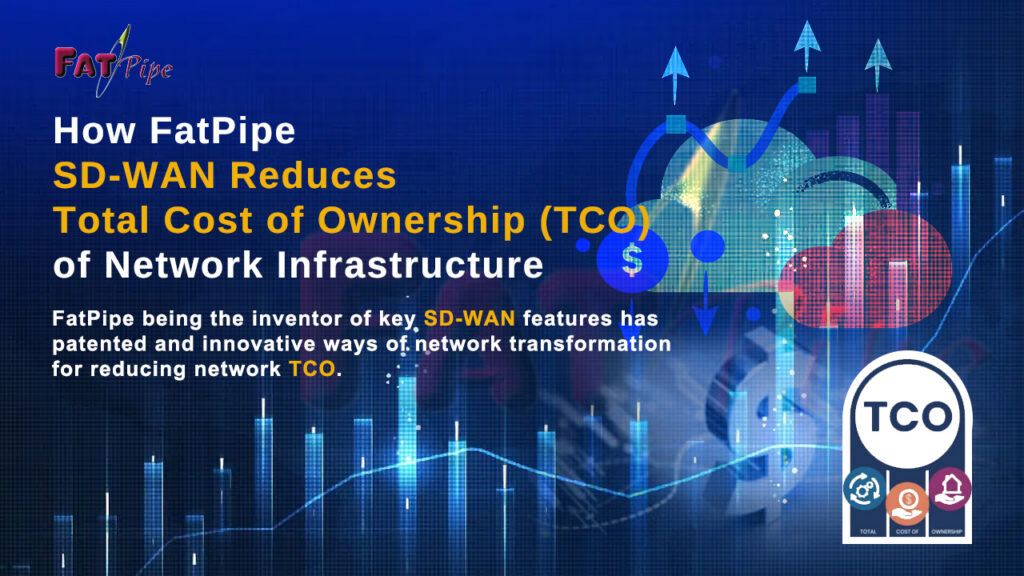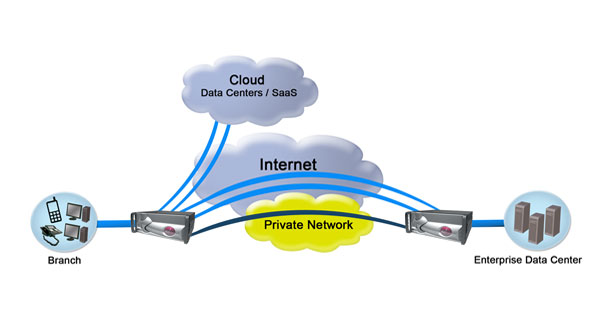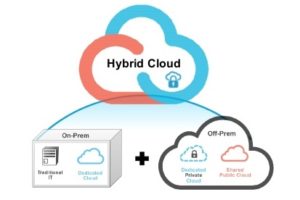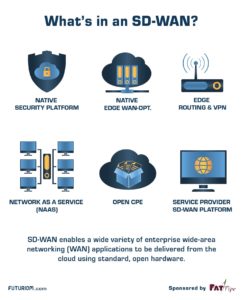How FatPipe SD-WAN Reduces Total Cost of Ownership (TCO) of Network Infrastructure

Several enterprises, even now, rely on standard WAN and SD-WAN offerings that generate high CAPEX and OPEX costs. This poses a high risk; the expenses for maintaining legacy WAN systems will eventually surpass the investment required for a modern, business-aligned network solution. Companies witness around 20-30% cost reduction when they switch to the SD-WAN solution (according to reports) but embracing FatPipe software-defined approach reduces Network TCO by more than 50% ensuring FatPipe SD-WAN investment break even for customers in less than one year.
Industry Unique Features of FatPipe for SD-WAN Investment Break Even in less than one year
FatPipe being the inventor of key SD-WAN features has patented and innovative ways of network transformation for reducing network TCO.
- Single IP Framework for Link Aggregation – FatPipe MPVPN patented technology aggregates traffic of heterogeneous last mile e.g. MPLS, Internet, broadband, LTE, 5G, wireless, leased lines, and satellite in end-to-end single IP framework enabling traffic navigation across multi- technology links. This traffic load balancing can reduce per annum customer bandwidth costs by 20-30%.
- Load Balancing without Traffic Duplication – FatPipe SD-WAN MPSEC TM patent ensures no duplication of traffic among redundant lines during data, voice and video to ensure customer bandwidth savings up to 50% year on year.
- WAN Optimization – Reduces TCO through advanced WAN optimization techniques namely caching, compression, de-duplication etc. FatPipe WAN optimization is at an innovative byte level, ensuring industry-best traffic optimization granularity. These features reduce bandwidth costs between 10% and 90% depending on payload application nature.
- Selective Encryption – FatPipe’s patented hybrid WAN technology selectively encrypts only the traffic placed on public links, avoiding encryption on MPLS traffic. This feature reduces encryption overheads ensuring potential bandwidth savings by 30% depending on packet size.
- Intelligent Traffic Management and Prioritization – This feature optimizes the utilization of available bandwidth reducing the need for over-provisioning and ensuring that critical applications receive the necessary resources to save excess bandwidth costs by 10% to 20%.
- Unifying Heterogeneous Devices – FatPipe SD-WAN has the capability of working as router, stateful/next-gen firewall, Intrusion Detection and Prevention system, load balancer, unified threat manager, WAN optimizer, DNS, and DHCP as well as provides best-of-breed network performance and fault management system functionalities. This combination saves customer hardware TCO by about 10% to 30%.
Combination of these features during solution design phase leads to significant reduction in customer network costs by more than 50% and also provides better network availability, impregnable security, accelerated WAN traffic, and enhanced user experience for increased organization productivity.





